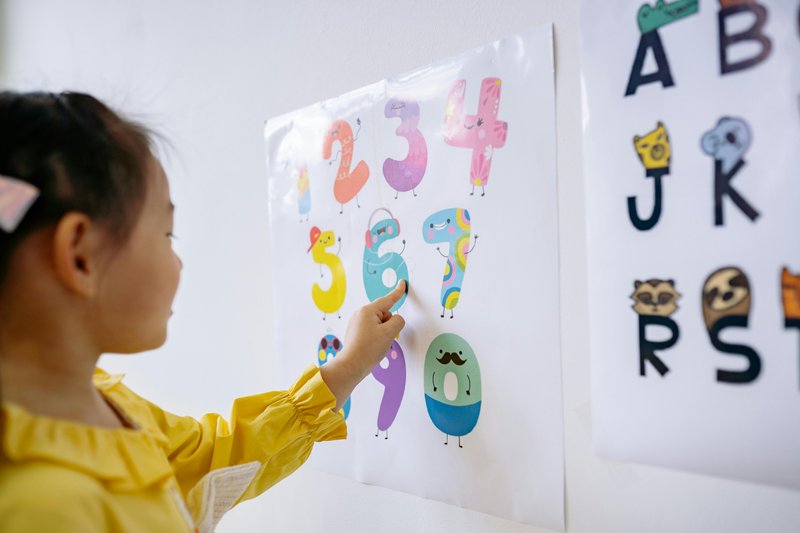Early Math Intervention Builds Momentum in 2025
Four states passed legislation this year to boost student math skills.
Blog Post

Yan Krukau via Pexels
Sept. 15, 2025
Early math success can be a strong predictor of later academic achievement. Better math proficiency early in a student’s education often means better reading and math skills later on. Yet, schools still see many students struggling. The 2024 National Assessment of Educational Progress (NAEP) found that 39 percent of eighth graders and 24 percent of fourth graders are below basic proficiency standards. Early academic intervention can help change that. A recent study found that early intervention can close the achievement gap in math by 40 percent. But early intervention has long only focused on identifying and improving reading deficiencies, ignoring math in the process. In 2024, 37 states had passed laws to mandate reading-based intervention compared to only seven states for math. This trend is starting to shift. In the first half of 2025, four states passed bills to expand early intervention to include math, with one bill specifically highlighting the need to focus on dyscalculia.
North Dakota passed SB 2213, a bill that starts a pilot program to screen for math delays and make targeted plans to improve math skills. But what sets this program apart is its focus and explicit mention of dyscalculia, which is a learning disorder that affects a student's ability to process number-based information. Dyscalculia affects four to seven percent of school-aged children. Before SB 2213, only seven states had laws that explicitly mentioned dyscalculia, and only 15 percent of surveyed teachers reported their students had been screened for dyscalculia. Early detection is crucial for students with learning disabilities and ensures they can receive proper and timely interventions and improve educational outcomes. SB 2213 acts as one step closer to that goal.
Signed into law this past June, HF 784 aims to improve math proficiency across the state of Iowa, in part through early intervention. Three times a year, from kindergarten through sixth grade, a student will be screened for math deficiency and may receive targeted interventions to increase their proficiency, based on results of the screening. HF 784 came about after the governor of Iowa listed math education as a top priority and in 2024, Iowa fourth graders’ NAEP math scores fell from 7th to 30th in math scores. But the bill is not without controversy. Representative Monica Kurth (D-Davenport) cites funding as a concern for the bill. She points to the “intense intervention” being required by schools with no funding associated to help offset the cost of the program. Rep. Kurth is not alone in her hesitation; Senator Herman Quirmbach (D-Ames) also questioned the bill's funding, saying, "Given the school funding situation, I don't know how we can afford to hire additional people and focus on the math instruction in schools that need it”.
Similarly, Montana saw declining math scores in 2024 and designated math education as a top priority for the upcoming legislative season. Montana had established literacy programs in the past year that focused on early and targeted intervention. Utilizing three different types of intervention, classroom-based, home-based, and jumpstart programs, HB 338 expands the literacy program to now include math.
While bills like Iowa’s and Montana's are responses to decreases in math scores, other bills related to math are inspired by successes in past legislation. Almost two years ago, Indiana passed a bill to improve reading in the state, and the state has already seen results—as reading scores decline nationally, Indiana has seen their scores rise. Policy and lawmakers have connected this success to their push for reading education. Now, they are looking to do the same for math. HB 1634 aims to boost math proficiency across the whole state. Part of this plan includes screening for math proficiency and targeted interventions for students who are found to need it. The bill was signed into law on May 1st, 2025. The author of the bill, Rep Jake Teshka (R-North Liberty), cites the past achievement of reading legislation as a source of inspiration, saying, “Hopefully we can do something similar to that in regard to math.”
But improving math may not be as simple. Indiana was able to follow a blueprint for their plans in improving reading, an option that won’t be available for math. As Indiana Secretary of Education Katie Jenner points out, “there’s not a recipe in our country that we can just take from another state that has scaled the work and do it.” Further, unlike reading, math screening is only required by a minority of states, and research into math education is overall lacking. But the bill is still a move in the right direction. Rep. Tonya Pfaff (D-Terra Haute), a math teacher, says, “This early intervention—the K through two—catching the readers and the poor math skills, I think [the] approach is fantastic.”
While the bills above act as a step forward, there is still more that needs to be done. Literacy tends to be the focus of early academic intervention, but math can be just as or even more crucial. By the time students enter kindergarten, many are already behind in math. Ben Clarke, an associate professor at the University of Oregon, notes that “the relationship between early and later math is actually stronger than that of early to later literacy.” Studies find strong links between early math success and later reading and math achievements. In fact, early numeracy skills are an even bigger predictor of academic success than similar literacy skills. Yet, focus on these math skills in state laws is still lagging behind its reading counterpart. But, as seen with these 2025 laws, change is happening. Policy can act as a stepping stone to increasing math proficiency across the country.